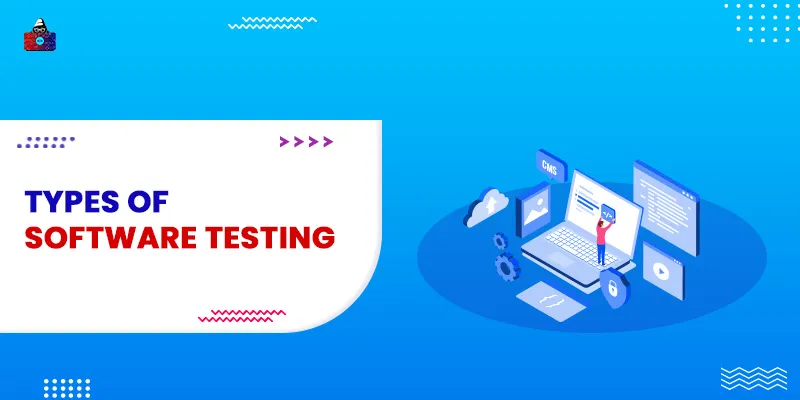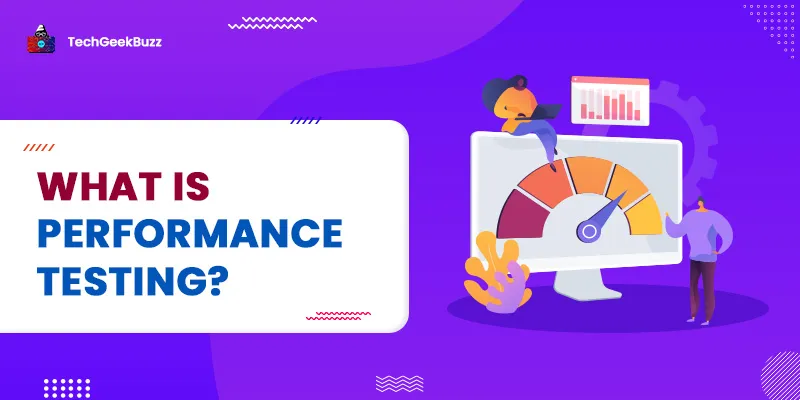As a tester, there are various types of issues regarding software testing, so it is essential to have different types of software testing i.e., Functional Testing, Automation Testing, Non-Functional Testing, Agile Testing, etc. In this article, we discuss all types of software testing in brief because every testing consists of features, pros, and cons.
Types of Software Testing
Here we are listing and describing the best types of software testing.
1. Alpha Testing
It is one of the most traditional types of testing handled in the Software enterprise. The purpose of this testing is to recognize all probable issues or bugs before delivering it into the business or to users. It is performed in internal testing for Commercial off-the-shelf software (COTS) through the highly skilled team of testers at the development of the site for finding bugs that are initially not found.
2. Acceptance Testing
This type of software testing is executed by the customer and checks the end to end the progress of the method according to the business conditions. The client accepts the software only when all the features and functionalities work as expected. It is the end stage of any software testing, after which software moves into production. It is also known as User Acceptance Testing (UAT). It is a stage of software testing that tests acceptability or requirements.
3. Ad-hoc Testing
As per the name of this testing, it is executed on the basis Ad-hoc, which means with no recommendation to the test sample as well as without any documentation in place for this type of testing? The purpose of Ad-hoc testing is to detect the errors and develop the applicability by performing any progress of any casual functionality. This testing is an unconventional method of detecting errors and can be executed by anyone in the design. It is hard to recognize errors without any test case, and however, sometimes it is probable that errors detected through ad-hoc testing have not been recognized using current test cases.
4. Accessibility Testing
Accessibility Testing aims to discover that the software is available for disabled general users or not. This testing is a part of usability testing in which users under deliberation are users with all types of abilities as well as disabilities. The importance of accessibility testing is to support both accessibility and usability. Accessibility aims to provide different abilities like:
- Visual Impairments
- Physical Impairment
- Hearing Impairment
- Cognitive Impairment
- Learning Impairment
5. Beta Testing
This software testing is a conventional type of Software testing that is carried out by the consumer. It is executed in the real type of environment before delivering the outcome to the market for the real end-users. This testing is used for assuring that no significant crashes in the product, and it provides the business demands of an end-user viewpoint. Beta Testing is strong when the consumer receives the software. End-users or others typically do this testing. It is the last testing performed before delivering a use for commercial purposes. The Beta version of the product is released, which is restricted to a specific amount of people in a particular area. So the end-user utilizes the software for sharing the feedback to the organization. The organization then gets significant progress before delivering the software globally.
6. Back-end Testing
When information is inserted on the front end application, then it saves in a database. Therefore testing of this type of database is called Database Testing Backend Testing. There are various databases such as Oracle, SQL Server, and etc. Database Testing includes testing of data structure schema, table structure, stored procedure and many more. In the Back-end testing, the graphical user interface is not included, and testers are immediately related to a database with appropriate access. Testers can quickly validate data by operating any doubts in the database. There can be problems recognized such as deadlock, data loss and data corruption etc. when this back-end testing. These problems are essential to fix before the system/database operates live in the production environment.
7. Browser Compatibility Testing
Browser Compatibility Testing is conducted for any web applications. It assures that software can operate with the sequence of various operating systems and browsers. Browser Compatibility Testing also confirms regarding web application works on all variants of all types of browsers. This testing is a subtype of the Compatibility Testing.
8. Backward Compatibility Testing
Backward Compatibility Testing verifies whether the recently updated software or developed software runs excellent with the earlier variant of the environment. Backward Compatibility Testing examines where the latest variant of software runs perfectly with file form produced by a previous variant of the software. It also runs excellent with data files, data tables, and data structure generated by the earlier variant of that particular software. If any software is renewed, then it must run high on the head of the previous version of that software.
9. Black Box Testing
Black Box Testing does not consider internal system design because the test is based on the conditions and functionality. Complete data about the benefits, limitations, and varieties of Black box testing can be viewed here.
10. Boundary Value Testing
Boundary Value Testing verifies the behaviour of an application on the boundary level. This type of software testing is performed to check if errors present at the boundary values. It is applied for testing the various series of numbers. There is a lower and upper boundary for all series, and testing is conducted on these types of boundary values. If testing needs a test series of numbers from 1 to 500, then testing is conducted on rates at 0, 1, 2, 499, 500 and 501.
11. Branch Testing
This type of software testing is performed during the unit testing as it is a type of White box Testing . Branch Testing, as the name, suggests that code is being entirely tested by crossing at every branch.
12. Comparison Testing
Comparisons of weakness and strength, two versions of a product or similar product are known as Comparison Testing. In this type of testing, the tester compares the strength and weakness of software with other software available in the market. This helps to improve the product on a competitive basis.
13. Compatibility Testing
In this type of software testing, the user can verify the behaviour of software that operates in various web servers, hardware, and network environments. Compatibility testing assures that software can work on multiple configurations, different browsers, different databases, and their variants. The testing team performs compatibility testing.
14. Component Testing
Developers mostly perform it after the conclusion of unit testing. Component Testing includes testing of various functionalities as a unit code, and its purpose is to recognize if any defect lives after joining those various functionalities.
15. End-to-End Testing
Similar to system testing, this software testing includes testing of whole application conditions in a situation that simulates real-world use, like communicating with the database, managing network, communications, or combining with different hardware, applications, or methods if suitable.
16. Equivalence Partitioning
This software testing type is a subpart Black box testing. In the Equivalence Partitioning, a complete set of the group is chosen as well as some numbers are selected up for testing. Commonly, all values from that particular group can generate the same outcomes. This testing aims to eliminate unnecessary test cases in a specific collection which makes the same outcome but not a bug. Assume, the application takes values in -10 to +10, so applying equivalence partitioning the values chosen up for measurement is zero, 1 positive value, 1 negative value. Hence, the Equivalence Partitioning for the testing is -10 to -1, 0, and 1 to 10.
17. Example Testing
This software testing stands for real-time testing. The testing involves all real-time situations and the situation based on the experience of the testers. The testing is beneficial because it removes errors which can occur in real-time, and software can be developed as per the requirements.
18. Exploratory Testing
This software testing is an informal testing type which is operated by the testing team. The purpose of Exploratory Testing is to examine the applicability and inspecting for errors that present in that particular application. Sometimes significant discovered errors can result in a system failure during this testing. In exploratory testing, it is essential to keep track of tested activities for the start of a specific flow.
19. Regression Testing
This software testing works as a whole application for the correction in any module is termed as Regression Testing. It is challenging to cover all the systems in Regression Testing; so typically, Automation Testing Tools are used for these types of testing.
20. Functional Testing
This type of software testing overlooks the inner elements and concentrates only on the outcome to check if it is according to the condition or not. It is a type of Black-box type testing provided to the practical necessities of the application.
21. Graphical User Interface (GUI) Testing
The primary purpose of this software testing is to verify the GUI according to the business necessity. The required GUI of the application is considered in the fully Design Document as well as GUI mockup screens. The Graphical User Interface Testing includes the quantity of the information range available on a screen, the arrangement of all types of texts, and content of the tables.
22. Gorilla Testing
The tester and developer conduct this software testing. In Gorilla Testing, the functionality in a module is examined entirely and profoundly. The purpose of this software testing is for checking the robustness of any application.
23. Happy Path Testing
The purpose of this software testing is for testing an application actively on an accurate flow, and therefore it doesn't go for adverse or failure conditions. The prime focus of Happy Path Testing is on efficient and accurate information inputs through which application makes the standard output.
24. Incremental Integration Testing
This type of software testing is continuous testing of any application whenever new functionality is combined. Modules and application functionality must be self-sufficient to test individually and it is created by programmers and testers.
25. Install/Uninstall Testing
Install and Uninstall Testing is a type of software testing which is performed on complete, partial or upgrade any install/uninstall methods on various operating systems supporting various hardware/ software environments.
26. Integration Testing
This type of software testing is all combined modules for verifying the functionality after the integration process. Modules are code modules, specific applications, consumer and server applications on the network, etc. This type of software testing is mainly related to server and classified systems. 27. Load Testing This software testing is a type of Non-Functional Testing, so the purpose of Load Testing is for checking maximum workload that can be handled by a system without performance degradation. This type of software testing benefits to obtain the maximum capability of a system under a particular load and any problems that can result in software performance degradation. Load testing is conducted through various tools such as LoadRunner, WebLoad, JMeter, and Silk performer.
28. Monkey Testing
This type of software is carried by testers, believing that if the monkey handles the application then what can be the random input or values will be entered by a monkey without having any knowledge or idea of the application. The purpose of Monkey Testing is for checking in case an application or a system gets crashed by giving random input /values/data. Monkey Testing is conducted randomly as well as no test cases, are scripted. Hence it is not required to be knowledgeable regarding the full functionality of a system.
29. Mutation Testing
Mutation Testing is a type of software testing in which the reference code of one of any program is modified and tests whether the current test cases can recognize these errors in the system. This software is a type of white-box testing. The difference in the program source code is short so that it doesn't affect the complete application. Only the particular field having the impact and the associated test cases should be capable of identifying those failures in the system.
30. Negative Testing
Testers are having a complete mindset of "attitude to break" so by using Negative Testing, they can verify that if a system or application breaks. A Negative Testing is a technique that is conducted using inaccurate data, void data or input. It confirms that if a system delivers a failure of void input and performs as expected.
31. Non-Functional Testing
This type of software testing is used by various organizations, and they have a specific team for this testing. NFT ( Non-Functional testing) involves testing of non-functional demands like Stress Testing, Recovery Testing, Security, Load Testing, Volume, etc. The purpose of NFT testing is to assure the response time of software is quick enough according to the business requirement.
32. Performance Testing
This type of software testing is performed mutually with stress testing and load testing. Testing is done for checking that the system satisfies all performance requirements. Various performance and load tools are performed to do this testing.
33. Recovery Testing
This type of software testing validated how well a system can recover from any bug, disaster or a crash. Recovery Testing fixes if the system can continue the service after a failure. The system should start getting data from where it failed the connection due to network cable unplugged.
34. Regression Testing
This type of software testing is used for modification in any functionality or module is known as Regression Testing. It is challenging for covering all the systems in Regression Testing, so Automation Testing Tools are used for this testing.
35. Risk-Based Testing (RBT)
This type of software testing is used for testing the functionality based on their superiority. Risk-Based testing involves complete testing of highly significant functionality, which have the highest impacts on a business or which have a high probability of failure. The priority determination is based on the business requirements, so after setting up the priorities, the testing process is executed according to the priority.
36. Sanity Testing
This type of software test is performed to determine that the newly developed version is functioning appropriately. Sanity Testing helps to reduce crashes and bugs through collecting the data regarding its performance. Hence it is used to fix a newly developed application.
37. Security Testing
this type of software testing performed by a specialized team of testers. Any hacking way can be inserted in any system. Security Testing is performed for checking how the software or application is secured from any internal and external threats. This testing involves security from viruses or malicious programs. It also tests how software behaves in the situation of a hacker attack or any malicious programs.
38. Smoke Testing
Whenever the development team provides a new build, then the testing team approves the build and assures that no significant issue exists. The software testing team ensures that software development is durable. Smoke Testing inspects that no show-stopper error exists in the development which will limit the testing team to test the application in detail.
39. Static Testing
This type of software testing is executed without any code. Static testing is performed on the documentation through the testing phase. It includes walkthrough, inspection and reviews of the project but it does not execute the code so alternatively syntax, naming conventions are reviewed. Static testing is also suitable for test cases, design document and test plan. It is essential for performing static testing by the tester as the bugs recognised during this testing.
40. Stress Testing
This type of testing is performed for checking the stress in the specification of software. It is performed under complex loads such as complicated database queries, setting a large number exceeding storage capacity, serial input to the system
Conclusion
This article helps you to gain complete knowledge regarding the Types of Software Testing. We have provided complete information about top software testing available so that you can obtain full details of these testing. There are various types of software testings present to remove multiple obstacles in software development. Many organizations use these testing to create the best product for their company or users. Our motive is to provide complete information through our article, and we will keep updating the data as per the development of technology.
People are also reading:



![What is Waterfall Model? [Phases, Pros, & Cons]](/media/new_post_images/Waterfall_Model.webp)

Leave a Comment on this Post